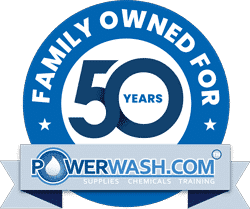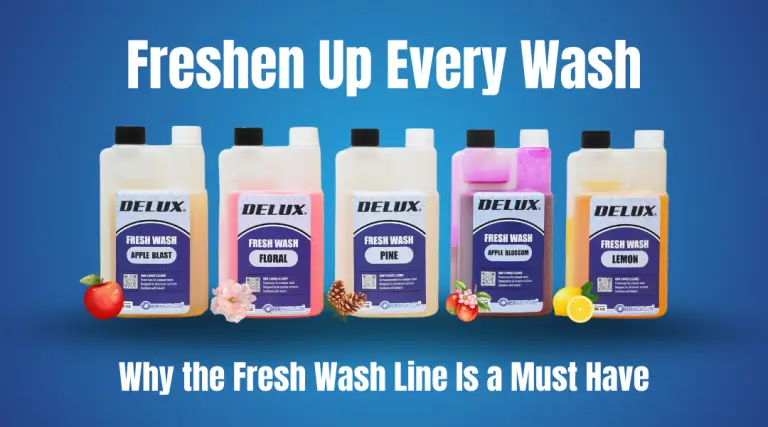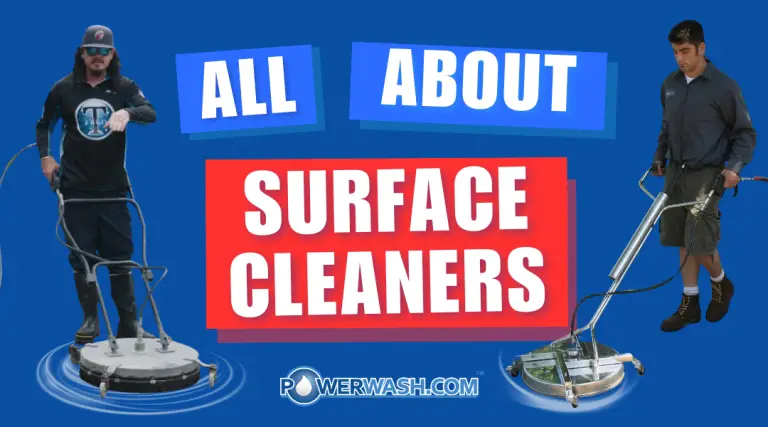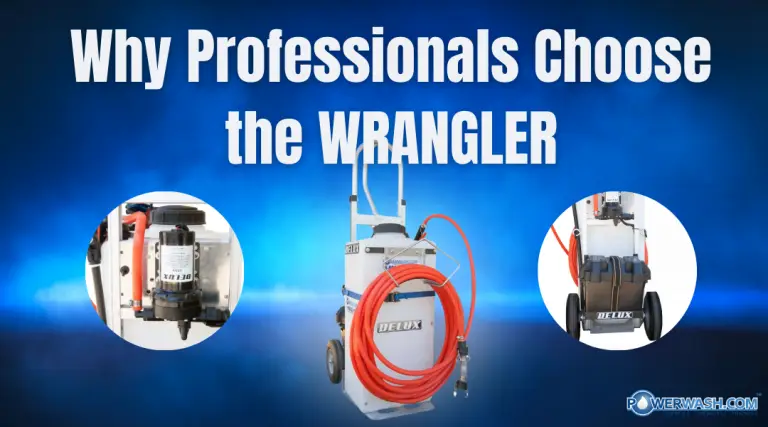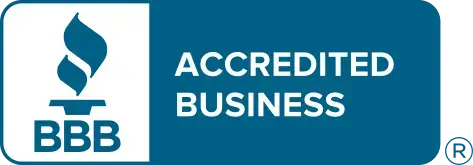- Home
- /
- PowerWash Industry
- /
- d-Limonene, Mother Nature’s Solvent
Subscribe To Our Newsletter
Stay in the know on the latest products, deals, events, tips & tricks.
Social Media
d-Limonene, Mother Nature’s Solvent
d-Limonene is the principal component of the oil extracted from citrus fruit rinds. When citrus fruits are squeezed and juiced, the oil is pressed from the rind. This oil is then separated from the juice and distilled to recover flavor and fragrance compounds. The bulk of the oil is left behind and collected. This is food grade d-limonene.
After the juice is extracted in a special process, the peels are sent to a steam extractor. This extracts more of the oil from the peel. When the steam is condensed, a significant layer of oil floats to the surface in the condensed water tank. This is technical grade d-Limonene that is used by most formulators to make cleaning products.
This extraction and distillation process is now done all over the world to meet the demands of d-Limonene use. Every country that has abundant crops of citrus fruits also has facilities to extract and package d-Limonene. Twenty years ago, I started buying the leftover citrus oils from a juice manufacturer in South Texas near the citrus orchards. They didn’t need it, so they sold the technical grade d-Limonene to me at a very reasonable price. I began selling it as a solvent product, hand cleaner additive, oilrig cleaner and wastewater treatment compound. Now the world knows the advantages of d-Limonene, and the prices at the wholesale level are very high compared to other solvents.
Uses for d-Limonene have expanded dramatically. It is used in paints, fragrance additives, cooling fluids, downhole oil well fluid and other specialty products. The largest growth segment has been in the cleaning products industry. It can now be found in hundreds of cleaning products in the industrial and institutional product markets. The worldwide annual production of d-Limonene is over 150 million pounds and rising fast. Every major manufacturer has negotiated supply contracts for d-Limonene for years to come. My company is no exception.
d-Limonene as a straight solvent can replace many undesirable and dangerous solvents such as mineral spirits, methyl ethyl ketone, acetone, toluene, xylene and most of the chlorinated solvents. It makes a great tar and asphalt remover when combined with a special surfactant that makes rinsing easier. d-Limonene alone is not water soluble, and upon rinsing even with hot water, the tar turns into a gooey mess. The fact that it doesn’t mix with water easily makes it a very good floating degreaser for use in waste water pumping stations, parts washer tanks, dip tanks and as a paint thinner. We sell it to the art departments of several colleges for use as a brush cleaner to replace turpentine that the colleges have banned.
Solvents
The solvency of solvents is determined by a test called the KB (Kauri-Butanol) rating test, which is a determination of the rate at which the solvent dissolves a particular hydrocarbon soil. d-Limonene has a KB rating of 67 which is almost the same as some of the chlorinated solvents. Mineral spirits has a KB rating around 55. Butyl Cellosolve has a KB rating around 50, which will give you an idea about the solvency of d-Limonene. Because it has high solvency, it can easily dissolve and suspend heavy oils, such as tar and asphaltic compounds. This same high KB rating allows the d-Limonene to be distilled and recaptured for reuse with special equipment. There are some large computer-related industries using d-Limonene as an electronics cleaner for board washing. They reuse it as long as possible.
There are a few drawbacks concerning d-Limonene when used as a straight solvent. The main one is the odor is often too much of a good thing. When used indoors, the orange citrus odor of technical grade d-Limonene is overwhelming to some people. If you mist it, such as when using an air-siphon gun for application, the mist is flammable. The flash point of technical grade d-Limonene is 115°F. Consequently, it cannot be used to directly replace 1,1,1, tri-chlor, trichloroethylene or other non-flammable solvents that are popular in the electrical maintenance areas of industry where they spray clean running electrical equipment and motors.
Some companies, including my own, are mixing d-Limonene with a flash suppressor. This increases the flash point to over 200°F and allows it to be used in some applications as an electric motor cleaner, contact cleaner and dip tank solvent for electrical equipment. The power must be turned off to do this maintenance, but the environmental risks are greatly diminished, and it’s worth the time. d-Limonene does not leave a significant residue, and it is non-corrosive to metals.
However, it will attack some plastics, rubber, paints and polymers. This is important information because the seals in high-pressure pumps on pressure washers can be adversely affected by d-Limonene, even when the concentration is low in pressure washing detergents. It takes a while to damage them, but we have proven that it is a significant cause of pump failure. We do not include it in our pressure washing products that go through a pump system.
d-Limonene As A Cleaning Compound
Now that the world has turned to organic natural solvents such as d-Limonene, a whole new formulation industry is emerging. In the past fifty years, we have grown accustomed to using solvents like butyl, mineral spirits and other less than desirable ones to add to our detergents to make them into water-soluble solvents. Butyl Cellosolve (ethylene glycol monobutyl ether) has been the all-time leader in this field. Most of the degreasers on the shelves at the local supermarket contain butyl. The popular ones are Fantastik ™, 409 ™, Windex ™, Simple Green ™ and many more. They are all great products and have been for many years. In my opinion, butyl is still the best solvent additive, and I use it in many products also. It will stay in solution easily and will not cause damage to spraying systems.
However, the times are changing, so now we see products containing d-Limonene, soy oil solvent, corn oil solvents, pine tree terpene solvents and the like. The difficult part about using natural solvents is their resistance to solubility in water. As manufacturers of degreasers, we have had to spend many hours in the lab developing ways to make a nice, clear liquid degreaser with a percentage of d-Limonene in it. The same surfactant system we use for butyl will not work for d-Limonene. It turns the whole liquid product into a milky-looking mess, so most of the leading manufacturers have developed ways to make the product stable and work as well or better than the “good old” butyl degreasers.
Another challenge for us when using d-Limonene as an additive in detergents is its suppression of the foaming ability of “foam making” surfactants. We must keep the total concentration of d-Limonene under ten percent and add more surfactants to keep the foam levels up to customers’ expectations.
How d-Limonene Works in Detergents
Ok, here comes the technical part that everyone should know about how solvents such as d-Limonene actually work in a detergent system. Modern detergents do not use soap as a part of the cleaning system. Soap is comprised of tallow or tall oil mixed with alkaline material and water. The resulting soap is fine for taking baths but is terrible for cleaning hard surfaces. It combines with the calcium and magnesium found in most unsoftened water to form lime soap (bathtub ring) and is difficult to rinse off of newly cleaned surfaces.
We now use surfactants in different amounts and blends to replace soap. Surfactant is a term referring to these “surface active agents.” They are synthetically produced and do not contain soaps at all. There are actually hundreds of different surfactants to choose from as a formulator. Many hours are spent in the lab to pick the correct combination of surfactants to put in detergents.
Surfactants are combined with other alkaline ingredients, rinse agents, water softeners (such as phosphates) and sequestrants to control the calcium and magnesium in water. The surfactants are the ingredients that actually penetrate the dirt and put it in suspension. They also surround the oils in the dirt like little spheres and don’t allow them to reform or stick to the surface again. This is called solubilization. The surfactant molecules line up in a certain way to form micelles. These micelles are the controlling force in a detergent system and get utilized in the cleaning process. The more surfactant in the product, the more micelles are available for cleaning. Some companies scrimp on the surfactants because they are expensive. Instead, they pay the price of ineffective products that just don’t dilute well with water or work effectively.
Solvents are added to this detergent system to attack the barrier of hydrocarbons such as oils, grease, tar, asphalt, fuels, etc. Surfactants do what they can to put them in suspension for rinsing, but they just can’t get them all off. Alkaline ingredients work to emulsify them, but only a limited amount can be put in the product because of the adverse effects of high pH on some surfaces. To solve this dilemma, a solvent is added to take up the slack and help the surfactants do their job. Butyl works great as a booster, but some states think it causes health problems. (The jury is still out on that one.) Terpenes, such as d-Limonene and other natural solvents, do help in these degreasing products. There are no known health-related problems except for people allergic to citrus products.
Applications and Techniques for d-Limonene Products
Products containing more than fifty percent of d-Limonene fall into the straight solvent category. These are used for removing wax, inks, tar, asphalt, gum, adhesives and other hydrocarbon soils. For the best results, it is recommended that the product be applied undiluted with a low-pressure pre-spray applicator of some kind that is solvent resistant. It is also used in dip tanks or parts washers in this concentration. Some companies also offer d-Limonene at ninety percent mixed with a surfactant and gelling agent. The resulting product is thick but still sprayable. It clings to vertical surfaces and does not run off. The solvent dissolves the oils, and the surfactant removes the dirt, clay and salt particles. This kind of product is a real labor saver when pre-spraying trucks or cleaning refineries, construction machinery and other areas that get oily and dirty. Non-viscous degreasers tend to run off onto the ground or evaporate before they do their job. Less product is actually used when it is gelled and can stick to the surface.
Products containing from twenty to fifty percent d-Limonene are usually hand cleaners, printing press cleaners and other heavy-duty cleaners that are not required to foam or be used as a detergent. This category also includes automotive type cleaners such as brake cleaner, engine degreaser, automatic parts washer solvent and floor cleaners. They rinse well because of the amount of surfactants in the formulas, and there is usually over thirty percent of water in them. A product containing an alkaline detergent and thirty percent of d-Limonene makes one of the best degreasers for cleaning concrete driveways, mechanics shops and even commercial kitchens. D-Limonene is very effective on baked on oils like soy.
Products containing less than twenty percent of d-Limonene make up over eight percent of the products on the market categorized as detergents. With five percent of d-Limonene, alcohol and surfactant, a very good glass and mirror cleaner is produced. At ten percent, it makes a great wheel wash, floor cleaner, equipment cleaner, upholstery cleaner and multi-use degreaser for spray and wipe cleaning on almost any surface.
Remember, d-Limonene at higher concentrations can affect pump seals and rubber parts. Use equipment to apply it that has viton seals or some other resistant-type material. An ordinary plastic garden-type pump up sprayer will last about ten minutes if you put d-Limonene in it. Flo-Jet™ pumps should be ordered with special diaphragms installed in the pump. The regular off-the-shelf ones will not last.
Safety and Environmental Concerns
d-Limonene is definitely a preferred solvent when it comes to safety and the environment. As a naturally occurring solvent, it biodegrades quickly; is much less toxic than mineral spirits and the chlorinated solvents; and is non-caustic and non-reactive to metals. The EPA has classified it as a non-toxic chemical in TSCA. It is not a SARA Title III compound, and it is not regulated by the Clean Air Act. Some states, such as California, have regulated d-Limonene as a VOC, but this status is currently being investigated in most states. At this time, it does not fall into that category like other solvents.
d-Limonene is a slight skin and eye irritant, and the mist can be aggravating to the lungs. These are temporary problems, and there is no known long-term effect on humans. It is classified as non-carcinogenic and non-mutagenic.
Overall, d-Limonene is the premier natural solvent in use at this time. I have investigated other ones, such as soy oil solvent. Soy oil solvent has good characteristics such as having high KB rating, and being non-flammable and non-odorous. However, this solvent has drawbacks. It is slow reacting, oily and has a limited supply. Terpenes from pine trees work as well as d-Limonene, but the odor is terrible. If its distillers ever eliminate the odor, these terpenes will be a good choice for a natural solvent. The supply is almost unlimited — there are a lot of pine trees in the world, and it is a renewable resource, just like citrus trees.
Shopping for d-Limonene Products
Contract cleaners should always ask for a copy of the Material Safety Data Sheet (MSDS) on any d-Limonene product. Some manufacturers have used less expensive hydrocarbon-based diluents to extend the natural solvent. They work fine, but there are some companies who can experience problems with the EPA when any hydrocarbons are used for cleaning at their facilities. The resulting run-off is the culprit. If it ends up in a waste stream that is monitored, the fines are high. The MSDS should clue you in to these undesirable solvents in the formula. Choose one that just uses d-Limonene to be safe and ask about the percentage of d-Limonene in the product. It’s your right to know.
The author, John L. Thomas, has been in the specialty chemical and pressure washing equipment industry for thirty years. His company, Third Coast Products in Bulverde, TX, is a nationally recognized wholesale supplier of detergents and solvents to pressure washer and chemical product distributors. He also has owned a Texas-based retail division with sales reps covering much of the state since 1980. Mr. Thomas is a consultant to the pressure washer and chemical industry.
The above article appeared in Cleaner Times and is used by permission. This article is also made available on the internet by Cleaner Times at
http://www.adpub.com/ctimes/features3/d-Limonene.cfm
Share This Post
More To Explore
Beat the Heat: Summer Safety Tips for Power Washing Professionals
Protect Your Crew. Protect Your Equipment. Protect Your Business. When the summer sun blazes, pressure washing jobs don’t stop—but the ...
Soft Wash Additive That Smells Amazing? Meet Fresh Wash
Freshen Up Every Wash Soft washing is all about precision, power, and presentation — and nothing completes a job like ...
Mastering the Art of Pressure Washing: Key Insights on Surface Cleaners
For professionals in the pressure washing industry, a surface cleaner is an indispensable tool, particularly for those who specialize in ...
The Wrangler™ Chemical Sprayer: The Ultimate Tool for Professional Cleaning Applications
For commercial cleaners and pressure washing professionals, efficient chemical application is key to achieving the best results. The Wrangler™ Chemical ...
